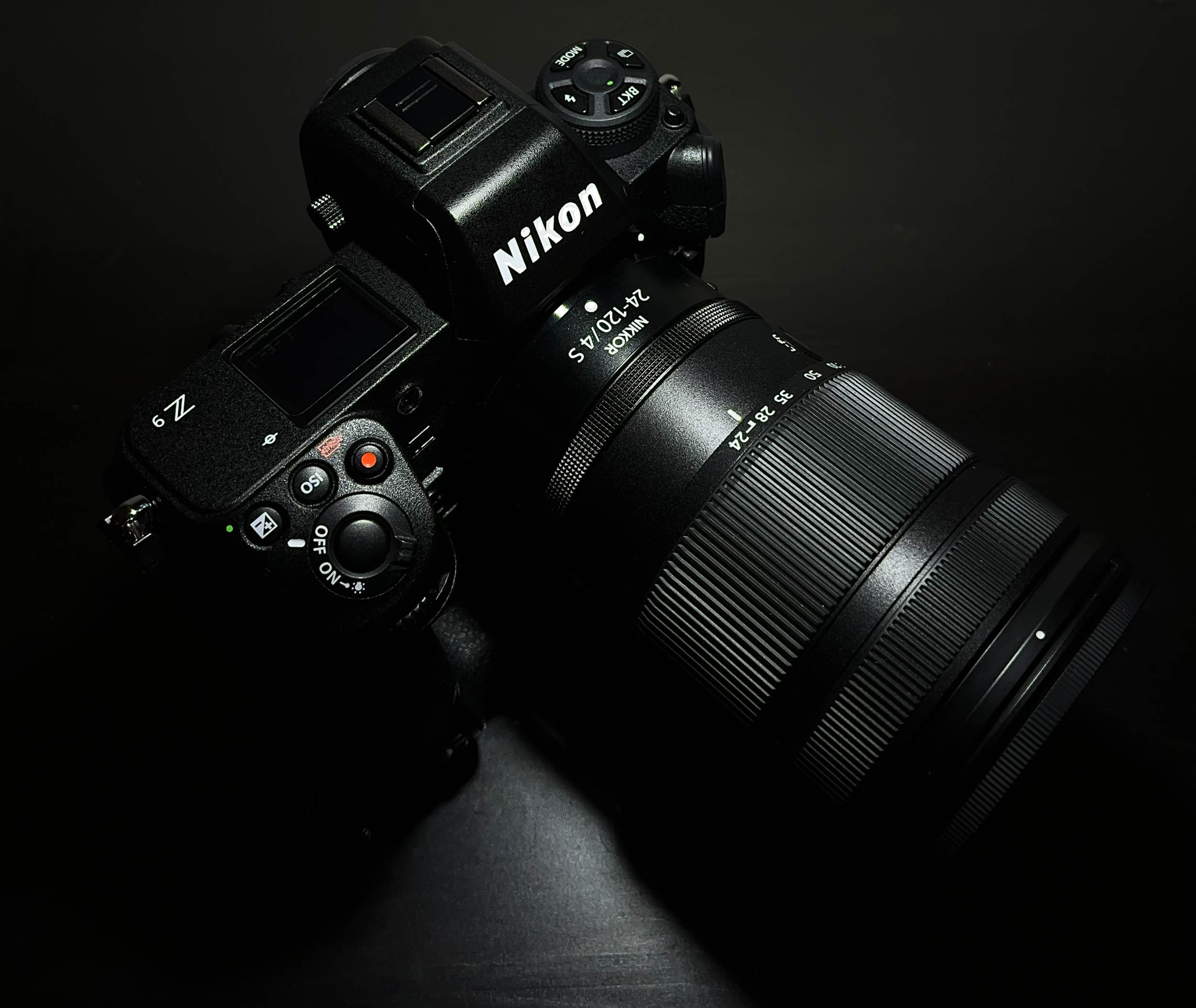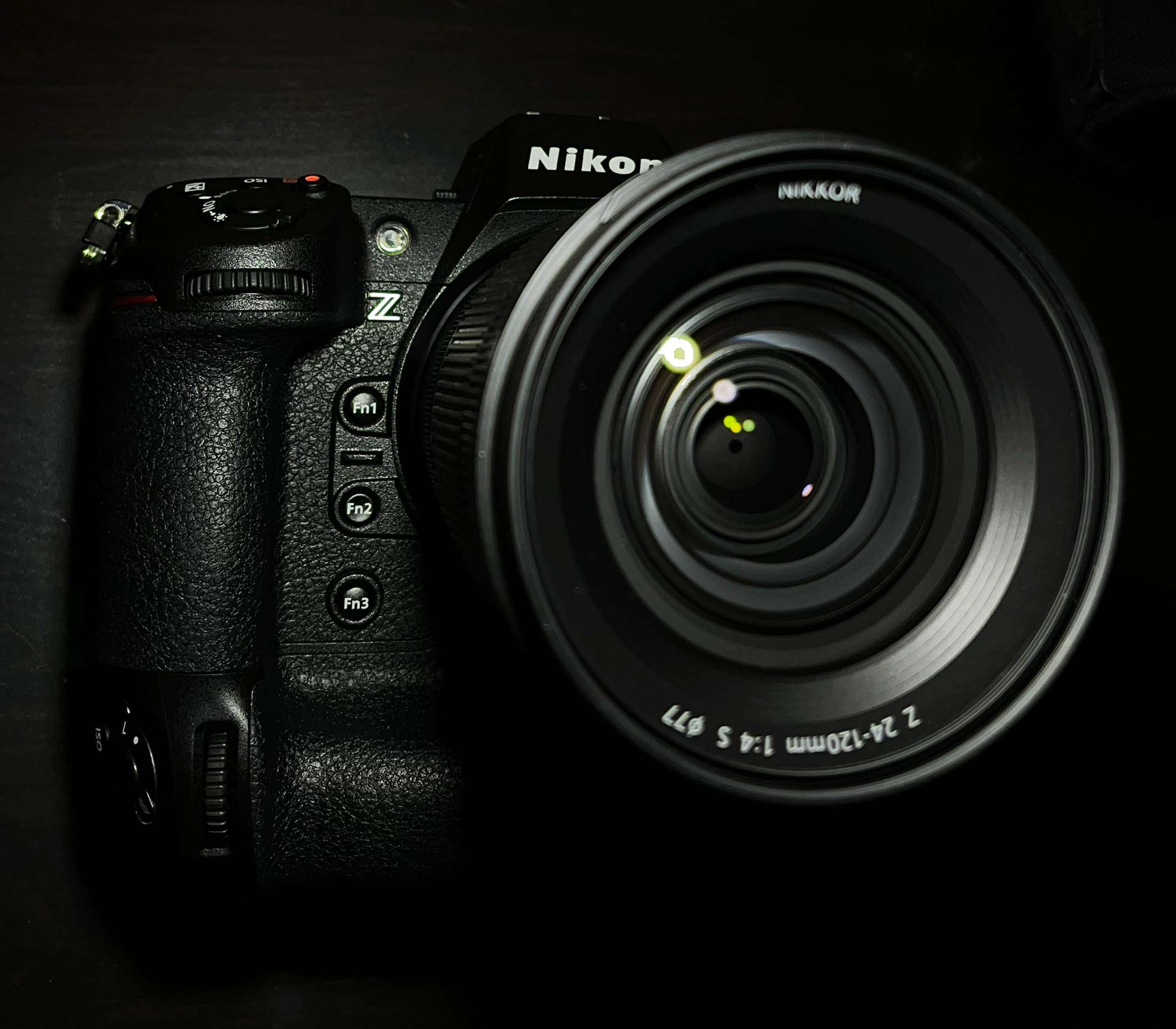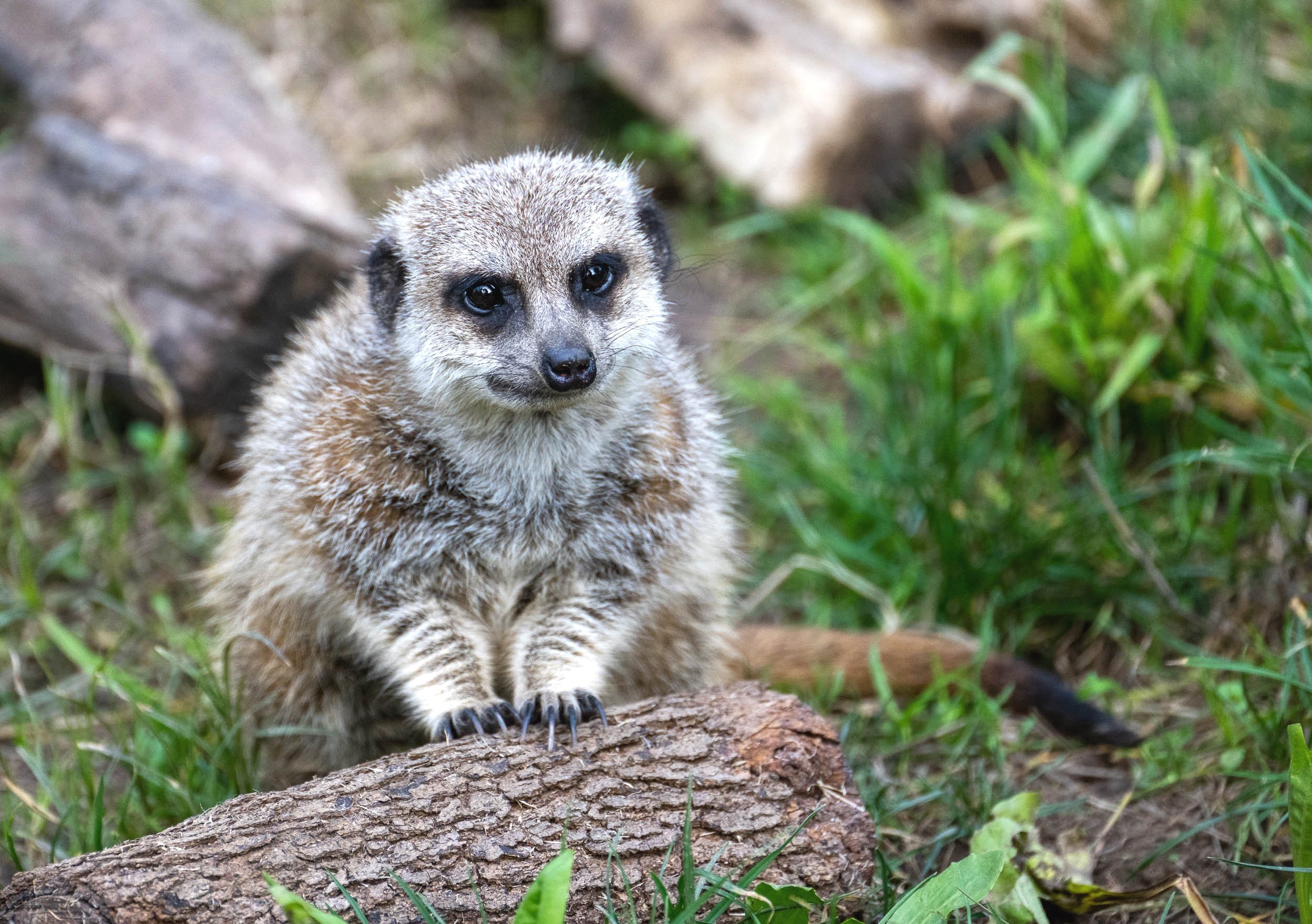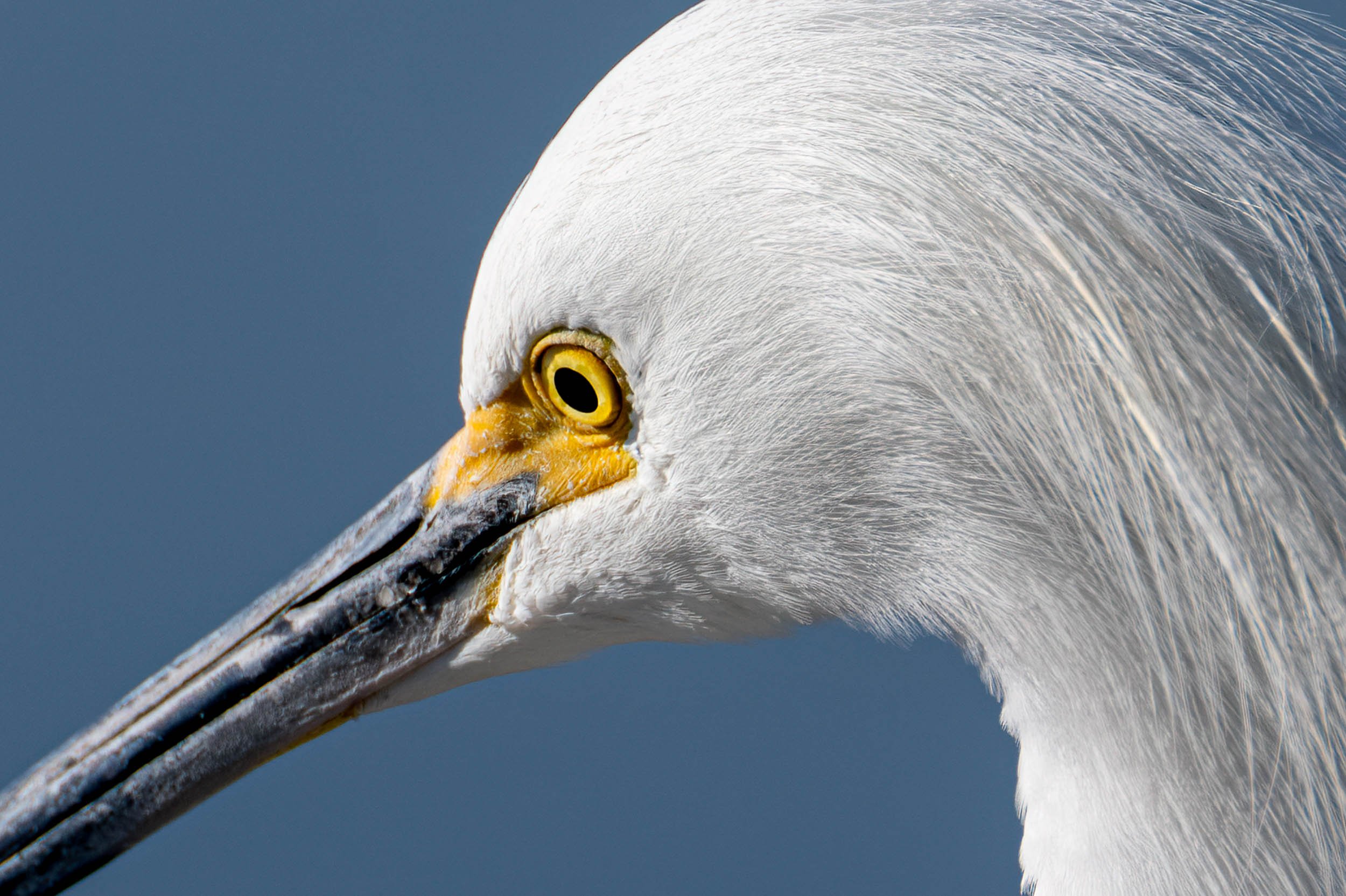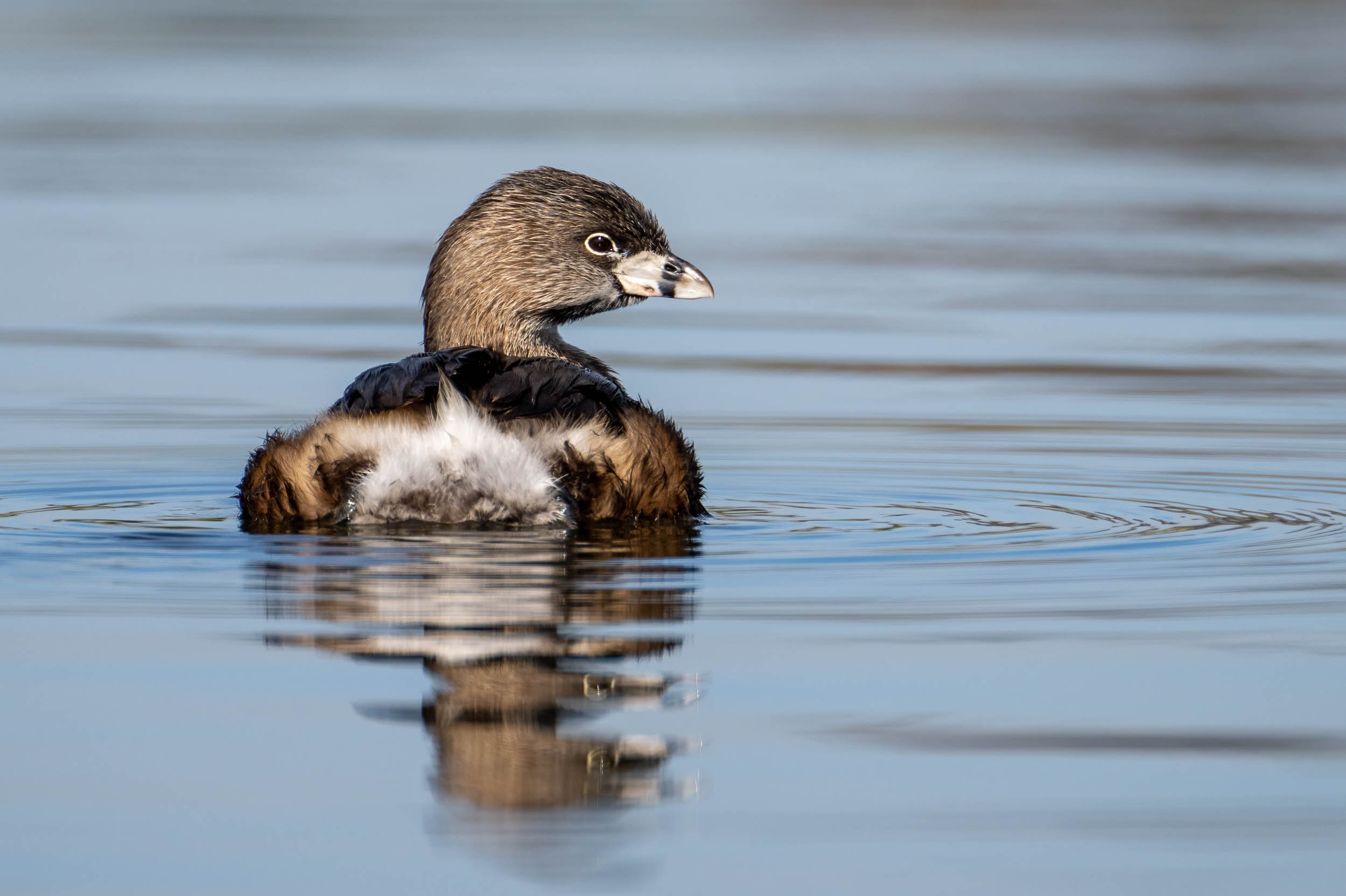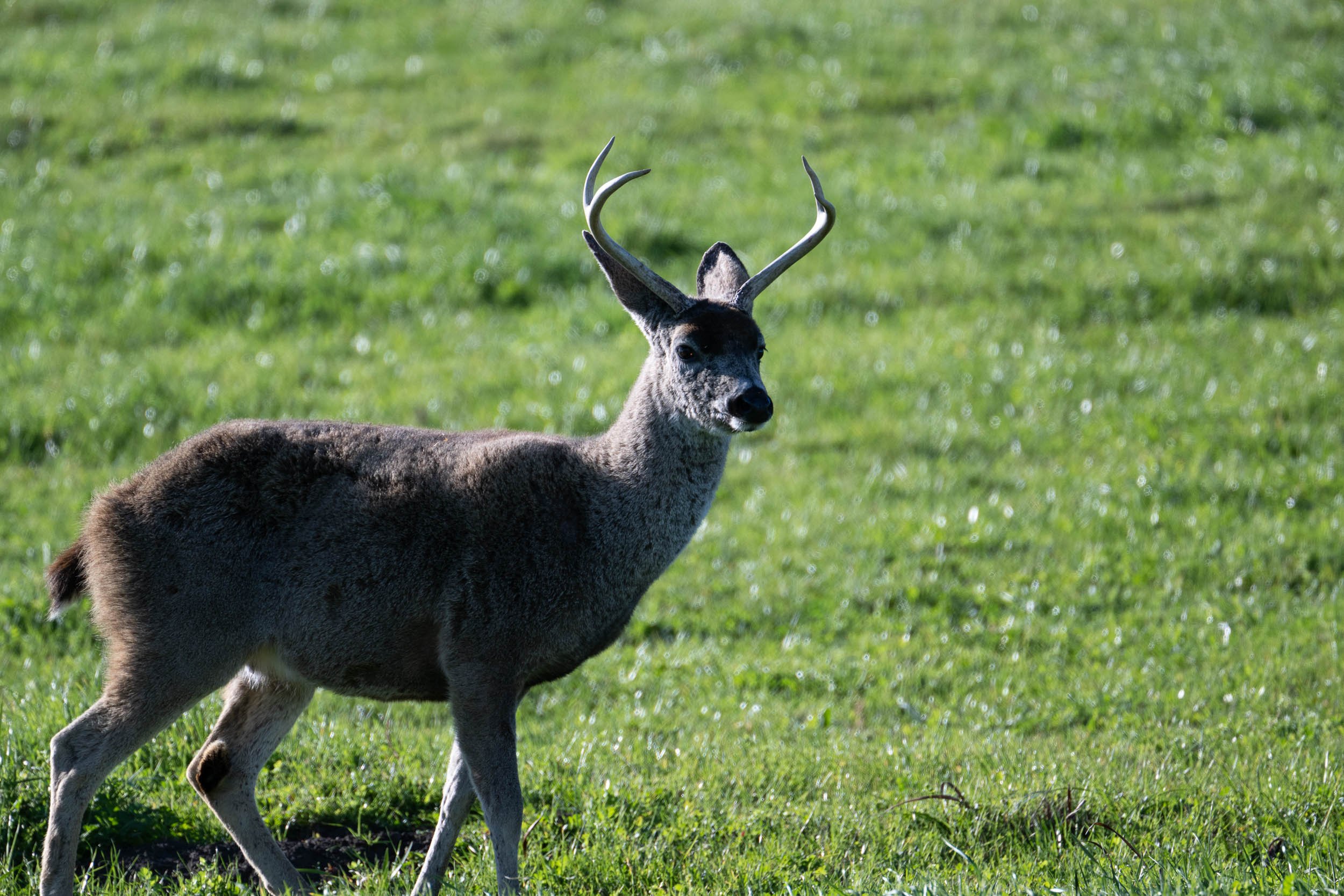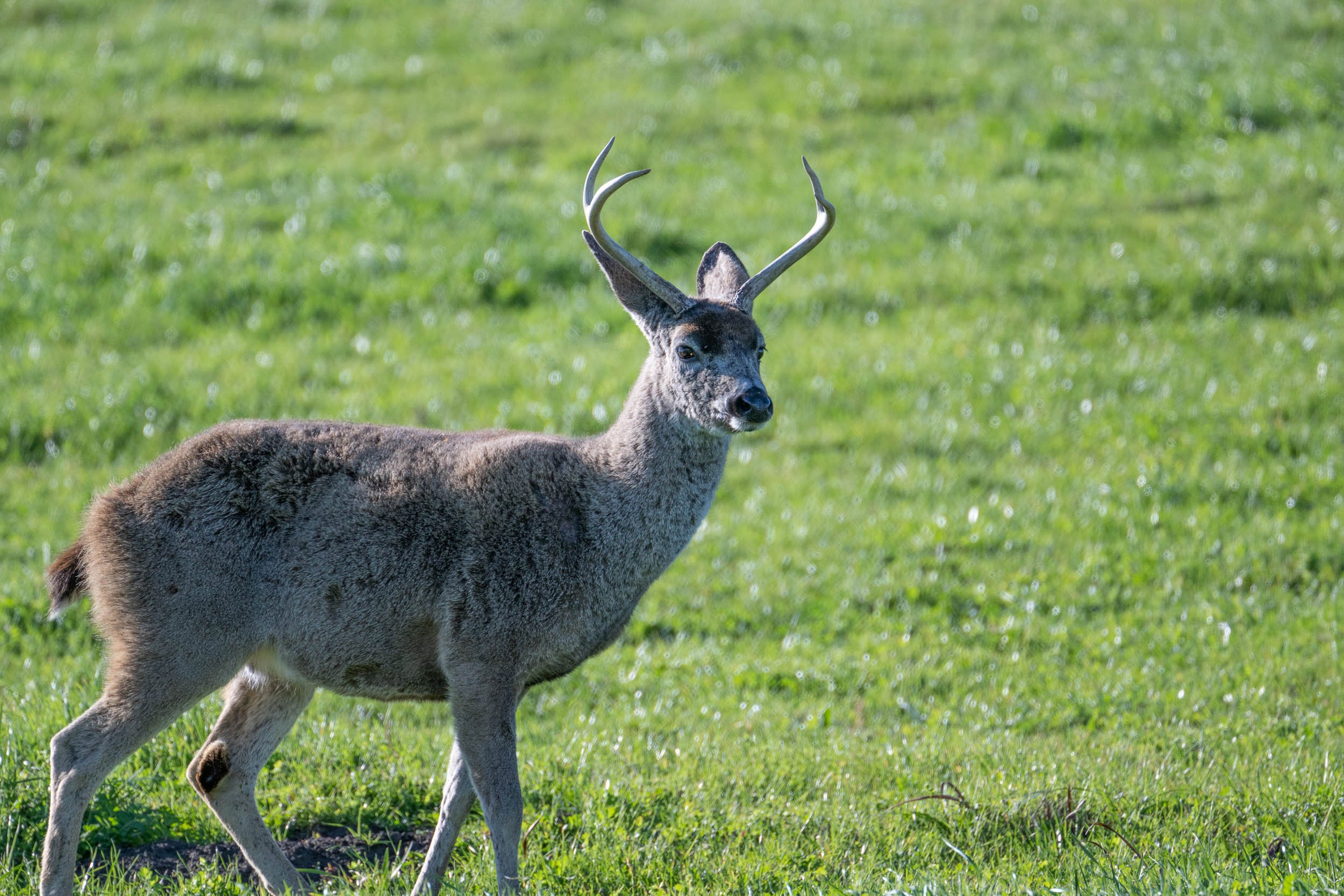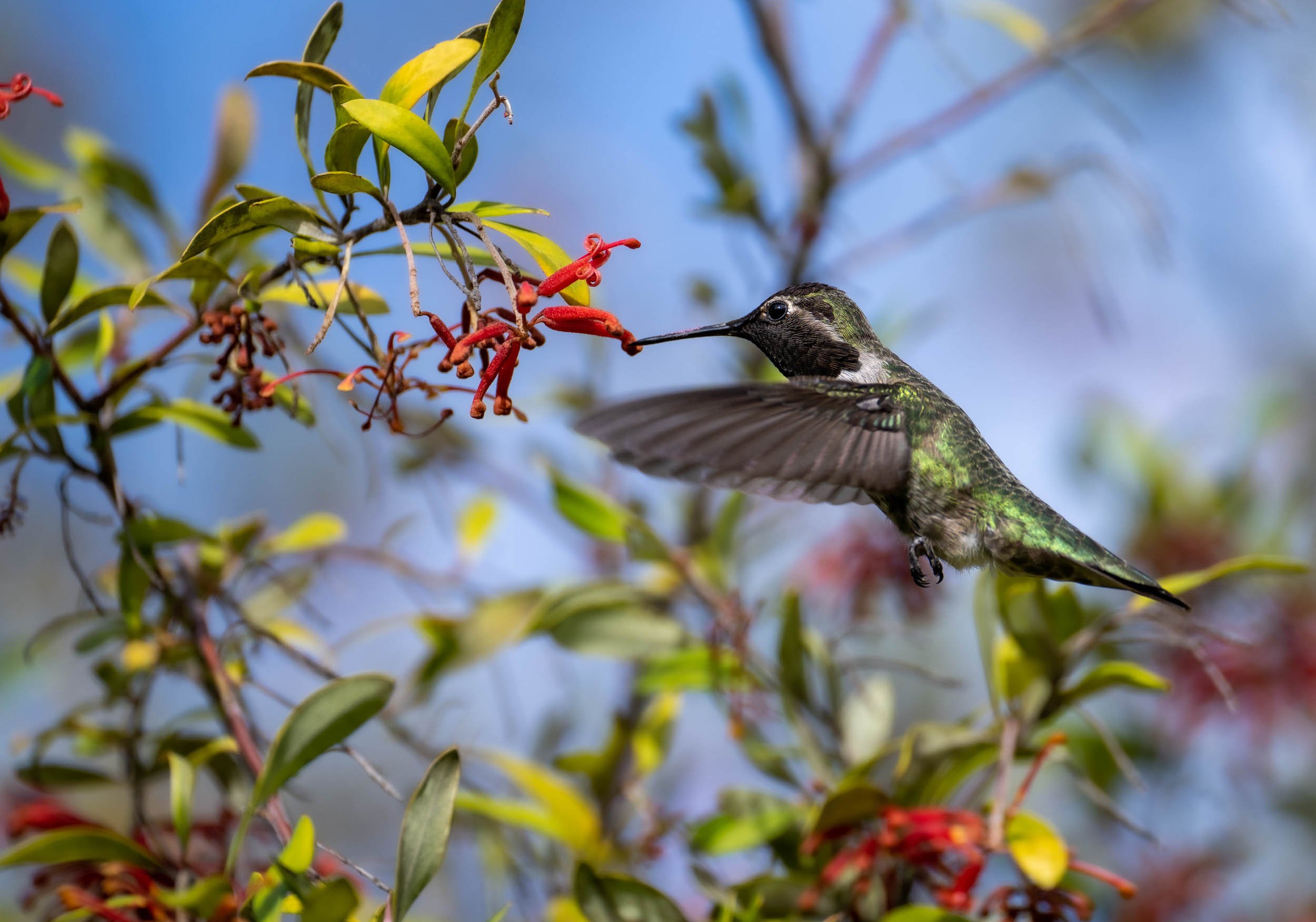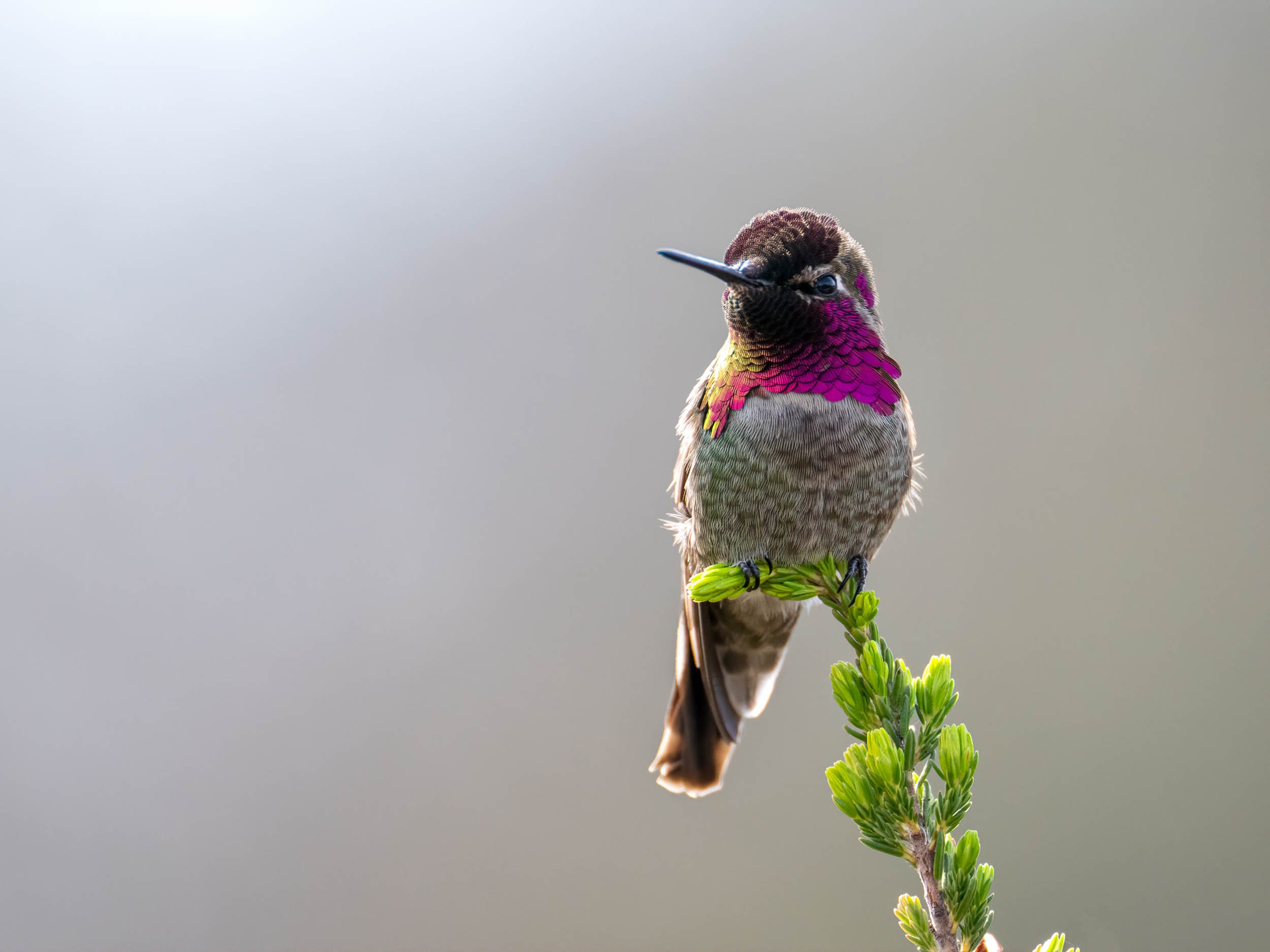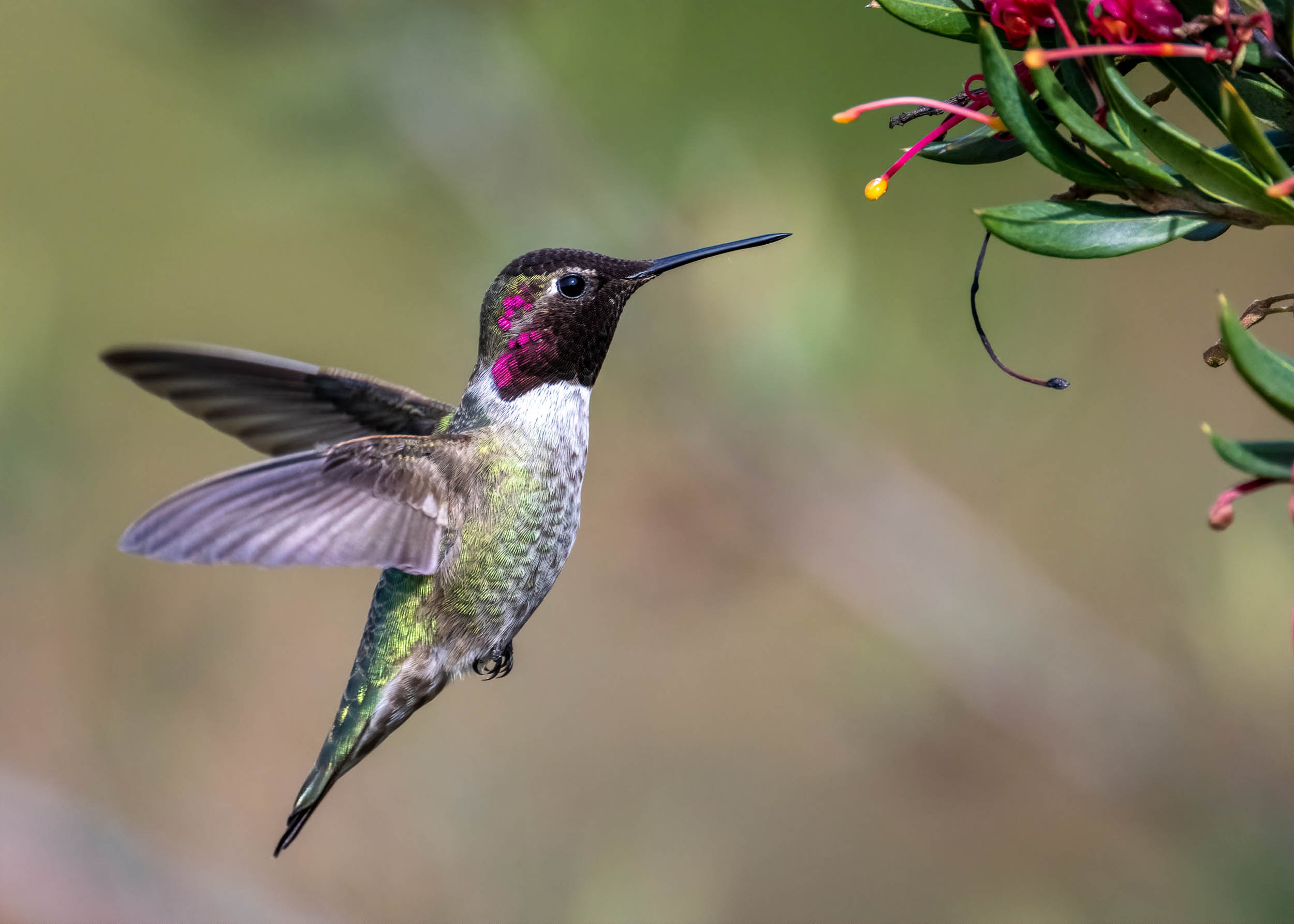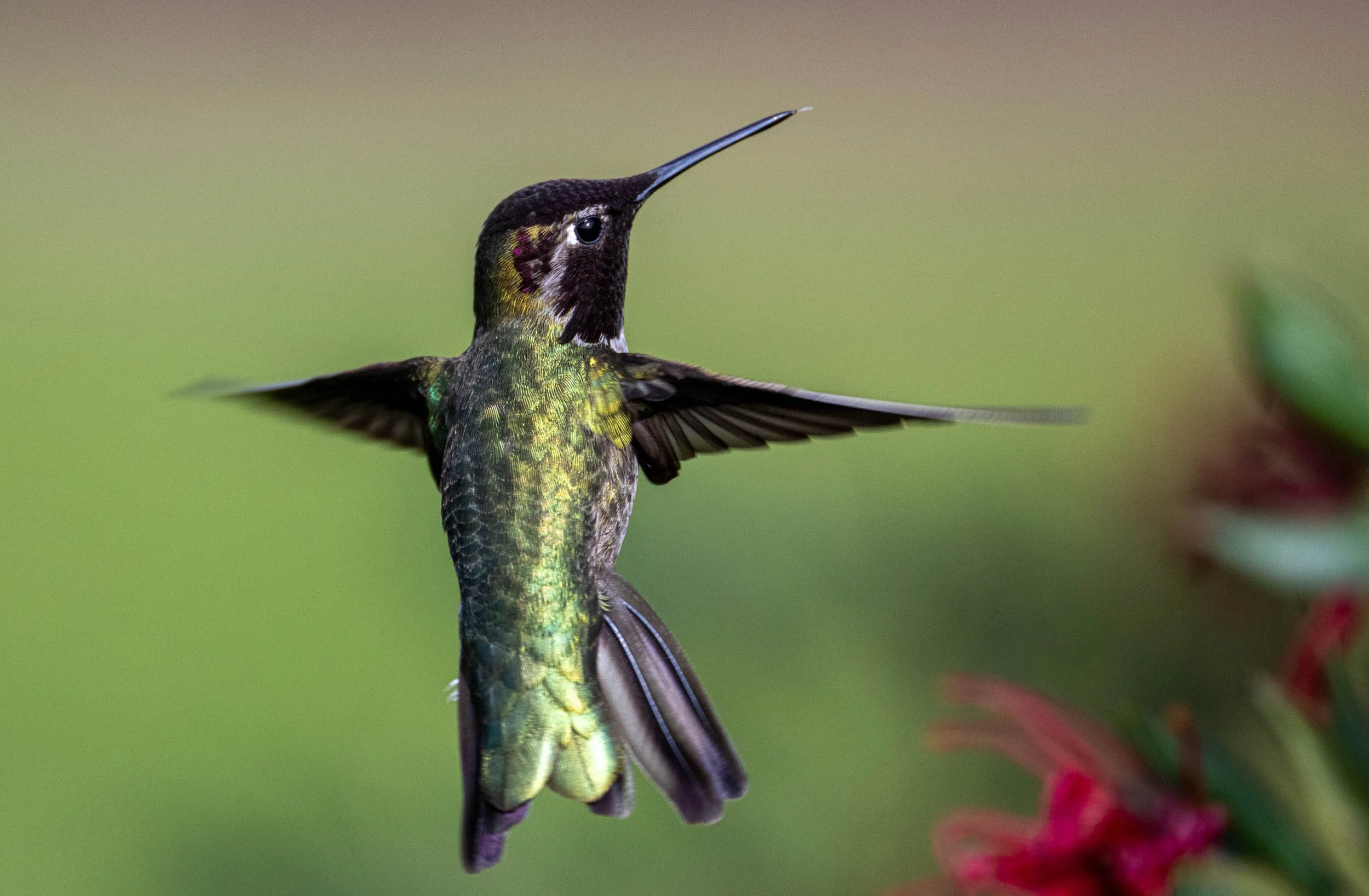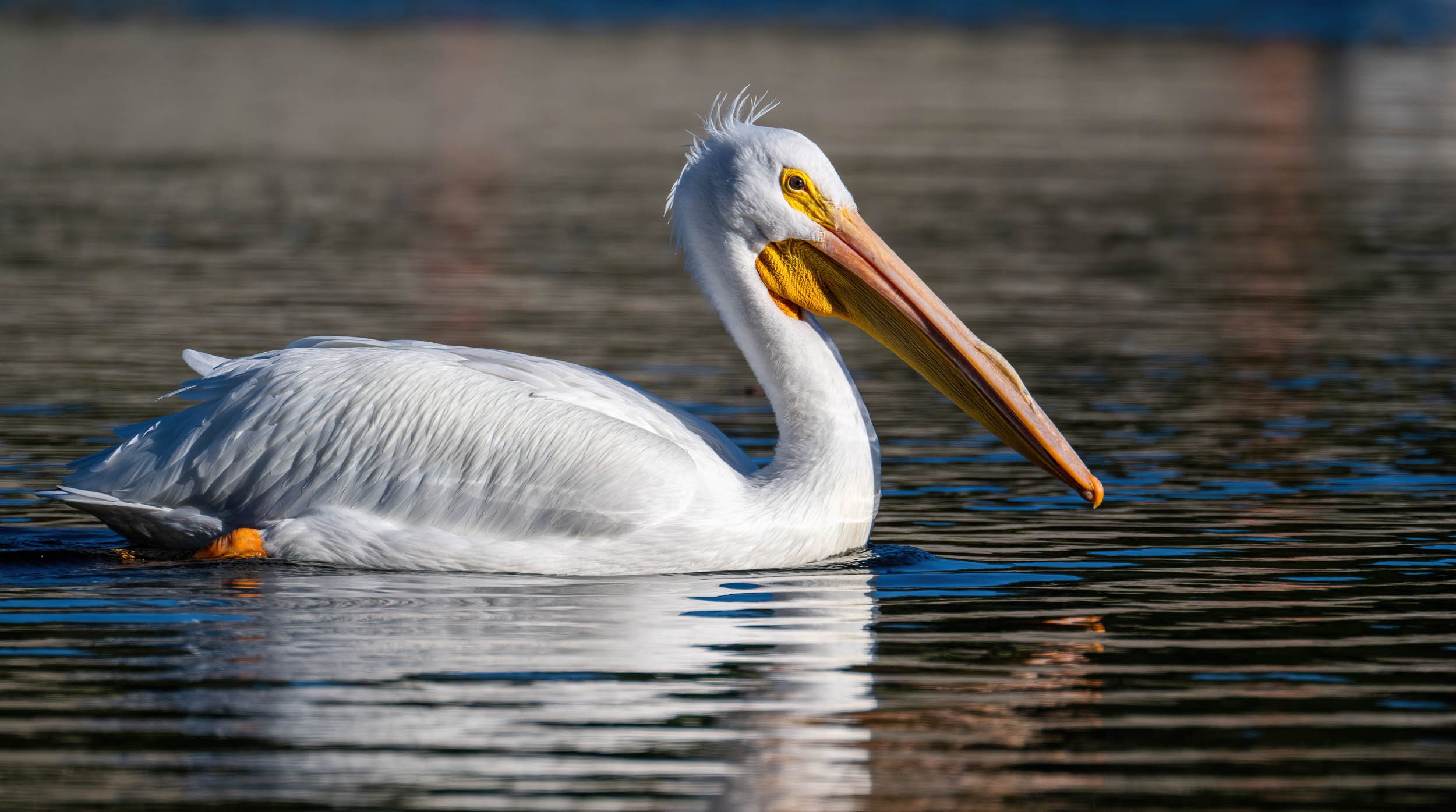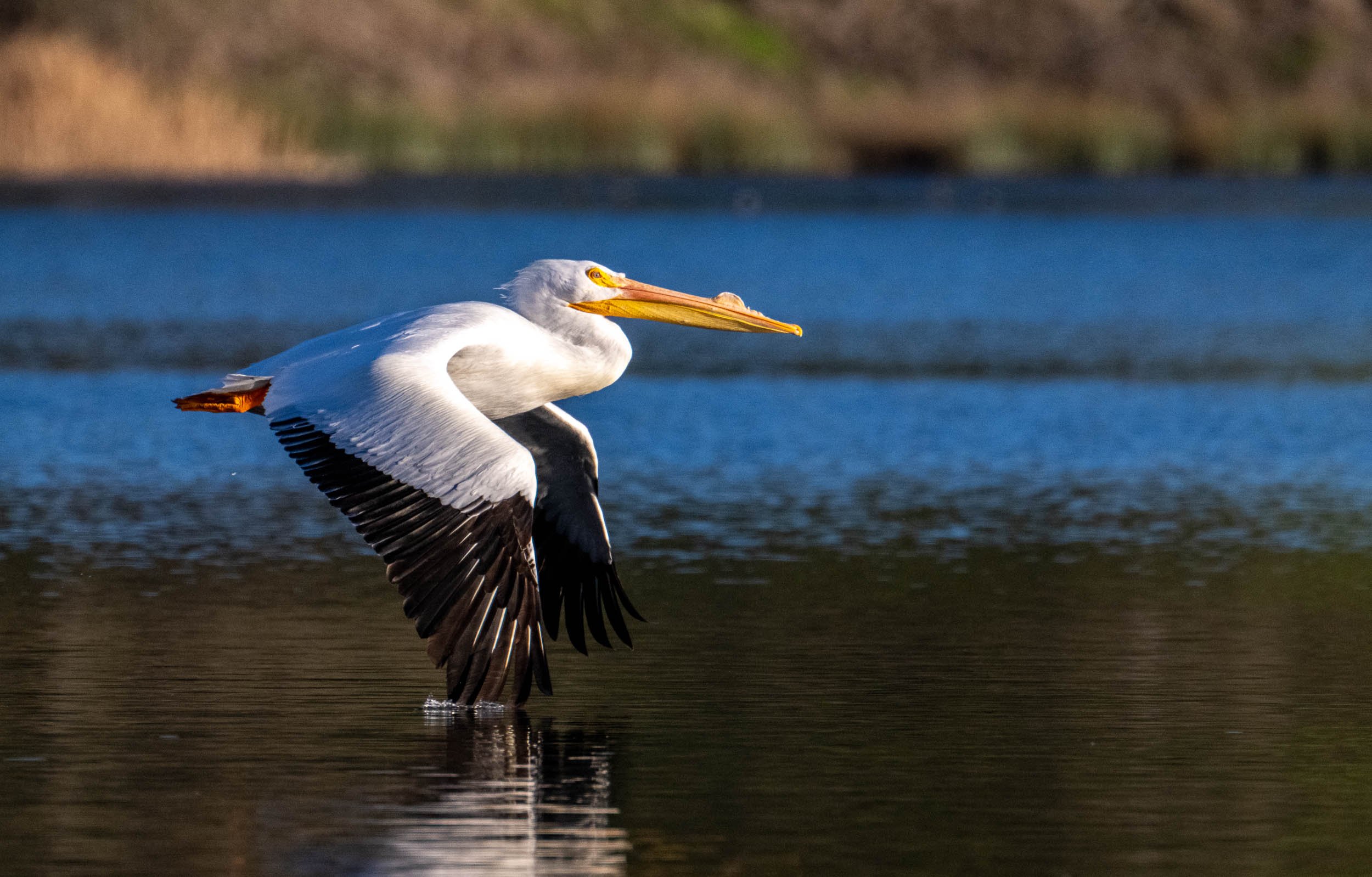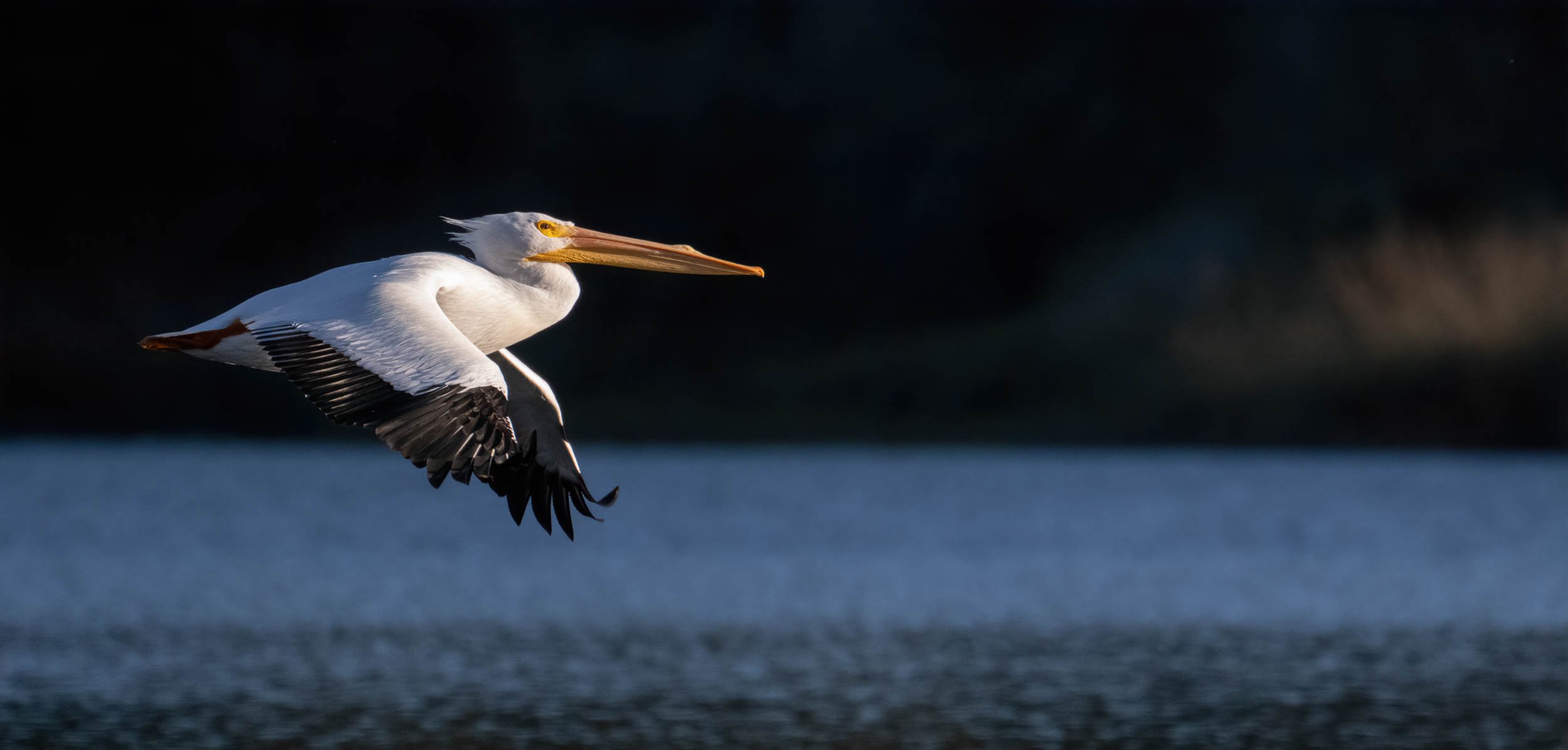Nikon Z9 for Wildlife Photography - Initial Field Review
Summary
Just a little over three years ago, the Z sensor mount was born. Now, 27 lenses and 8 bodies later, Nikon has released the Z9, its first professional mirrorless flagship body. This camera is, without a doubt, the most technologically-advanced mirrorless camera that Nikon has ever released. While the DSLR-like design language is familiar, the Z9 is far more advanced in its feature set than any of Nikon’s previous DSLR and mirrorless bodies, particularly for wildlife photography.
With the Z9, Nikon has promised better-than-D6 autofocusing performance, high resolution, and 20 FPS capture of 45.7 megapixel RAW images. Whereas in the past, wildlife photographers had to choose between speed (D6) and resolution (D850), the Z9 combines impressive speed and resolution in one unit. When my camera finally arrived, I set out to build some initial impressions after a few weeks of use and share them here.
TLDR: After several weeks of testing, I can confirm that the Z9’s performance eliminates any of the perceived shortcomings that the Z cameras had for photographing action subjects. The revamped autofocusing engine is vastly improved and much more sophisticated than prior Z models, proving both reliable and adaptable in a variety of wildlife shooting situations. Small but important details such as a retractable sensor cover, dedicated drive mode dial, USB-C charging, and the first truly blackout-free viewfinder enhance the overall experience and set the bar very high. Overall, shooting with the Z9 is very rewarding: it is hard to walk away from a shoot without a smile and a bunch of keepers.
In the following post, I have provided my initial review of the camera body and some thoughts about the Z system in general as it pertains to wildlife photography.
Note: I’m not affiliated with any brand or compensated in any way for my reviews.
Large male elephant seal broadcasting his alpha status. Nikon Z9 with the 100-400 F/4.5-5.6 S lens.
Stacked-sensor technology
Preceding Z cameras have all utilized a single bayer sensor configuration. When shooting a continuous burst in the fastest H+ setting, these cameras would insert previously captured frames into the EVF view to simulate a “no blackout” experience. This meant that you were always looking at images captured just a fraction of a second prior, not a live feed.
I found using these cameras challenging for tracking fast-moving subjects with a sensation of always being just behind the action. While the cameras provided beautiful image quality and very good AF performance, I always found them a bit challenging to use for wildlife.
Meerkat at the Zoo. Surprise! Z9 Subject Detection autofocus works well with meerkats! Nikon Z9 with the 100-400 F/4.5-5.6 S lens.
The Z9 completely changes everything in this regard. The Z9’s 45.7 megapixel sensor matches the Z7’s resolution, but the stacked design and image processing engine provide a truly blackout-free viewfinder experience that at times feels surreal. What’s more, the Z9 supports full RAW capture at 20 FPS and 120 FPS jpeg stills, blowing past the D6. At times, shooting the Z9 feels a lot like taking video, but producing a sequence of big, detailed RAW files instead of a movie stream. The lines between video and stills capture are definitely blurring here.
Pick up the camera after using a DSLR, and it feels strange not to hear feedback like shutter sounds and blackout, but the benefits are immediately apparent when shooting moving subjects (I do like to turn on the frame indicators to give me a visual cue when the shutter button is depressed). With no moving parts in the sensor, there is no clack-clack of the mirror or shutter mechanism anymore. This is great for skittish subjects that are sensitive to any noise. It also has the added bonus of not drawing unnecessary human attention to oneself or disturbing the peace. Taking photos feels effortless, and without any moving parts or mechanical shutter it doesn’t feel like “spending” anything when taking photos. While shutter mechanisms are durable, they do have limited lifespans, so it’s nice knowing there isn’t one to worry about here.
Great Horned Owl. Nikon Z9 with 100-400Z and 1.4X Teleconverter
One thing to be mindful of is how easy it is to get carried away with the burst mode. Fire away at 20 FPS and any memory card will fill up quickly. A high capacity CF Express card is an absolute must, in my opinion, and they are not cheap. Thankfully the frame rate can be dropped, if desired.
I’m also thankful the buffer is deep on the Z9, and when the camera does start to slow down during a burst, simply lift a finger for a few seconds and it clears. V 1.1 firmware has improved this even further with 8 seconds in high efficiency * RAWs before filling up the buffer.
Young elephant seals “mock fighting”. Nikon Z9 with the 100-400 F/4.5-5.6 S lens
One of the things that impresses me most with the Z9 is what Nikon calls “Dual-Stream Technology”. This tech combines and then splits the EVF and image processing pipelines to eliminate any skip or stutter when the photo burst is initiated, which even affects other stacked-sensor cameras. It doesn’t sound like much, but in practice, it’s incredible to take photos with zero blackout, or skipped frames. Absolutely nothing impedes the view of the action between viewing or shooting - i.e., there is no difference between viewing the scene and capturing frames. When I first saw the Nikon press release video describing this tech, I sort of wrote it off as marketing hype. However, in practice this seamless transition of viewing to shooting is extremely impressive, and has never existed before (at least to this extent.)
Another added bonus of the Z9’s stacked sensor is that there is virtually zero rolling shutter, so gone are the days of bendy wings, slanted vegetation in panning shots, or other distortions that plagued past electronic shutter modes. Although I do not shoot much video, I am sure that videographers will appreciate the reduced rolling shutter effects of the Z9 during action and panning.
Controls, build, ergonomics and layout
Ergonomics and controls can often boil down to personal preferences, but in my view, the Z9 has some of the best on the market. As someone who used the D850 for years, I feel right at home with the Z9. I like that the buttons are in what I would consider to be the “right places”: the On/Off button is right next to the shutter button for one-handed use, the playback button is on the right side and accessible with the right thumb, the dedicated AF-mode button sits on the left front of the camera, and a mechanical drive dial sits on the upper left of the camera, making switching between timer, continuous, and single shot effortless. Anyone who has used a Z camera or Nikon DSLR will have almost no learning curve when it comes to controls. While I’d prefer a big jog dial like Canon bodies to quickly review images, Nikon has implemented a nice compromise, enabling one to swipe your finger on the bottom part of the image during image review to cycle through a large number of photos quickly.
The camera feels incredibly solid overall, and though I haven’t tested it in extremes (yet), it seems like it is up to the task. With the Z9, one has to like a big camera. It’s the largest full-frame mirrorless on the market — but it also feels smaller than many square DSLRs, especially a honking D5/D6 or 1DX III.
The one knock I will give the camera’s build is size of the rear LCD screen. Though it is bright and clear and the articulation works beautifully, I’m puzzled why they couldn’t have put a larger screen in there. It has such large plastic bezels relative to the screen size.
Mule deer, Nikon Z9 with the 100-400 F/4.5-5.6 S lens.
Electronic viewfinder
At first glance, the 3.69 MP EVF panel specification seems relatively low resolution compared to other flagship cameras like the Sony A1 and Canon R3. In practice, the Z9 offers a great viewfinder experience. The screen is incredibly bright, and the image is sharp and clear, making it easy to judge critical focus . The only thing I would say detracts from the experience slightly is the slower refresh rate of 60Hz. The Canon and Sony flagships have 120Hz (or higher) panels which provide a more smooth view of the action, but I’ll admit this is something you only really notice with the cameras side-by-side. What I do notice, however, is that the EVF on the Z9 has a strange stutter sometimes when panning before the shutter button is depressed. I find it irritating that I had to half press the shutter to get a smooth view sometimes. My hope is this is just a bug that can be addressed in firmware.
Performance during camera operations
One of my favorite aspects of the Z9 is the responsiveness during a variety of camera operations. Bring the camera to the eye, and the EVF turns on instantly. Turn on the camera, and there’s very little delay before being able to take shots. Cycle through images during review is instantaneous. Zooming and panning around the images is seamless and smooth. There’s no shutter lag. There’s no delays when changing settings like ISO, shutter speed, aperture, drive modes. All of these these things further the impression that the Z9 does a great job of getting out of the way of the shooting experience.
Autofocus performance
It takes time to get to know a camera’s AF performance by adjusting settings, testing different modes in different situations, swapping lenses, etc. These days, comments about AF performance also seem to go obsolete fairly quickly with the rapid pace of new firmware updates. What makes things even more complicated is the introduction of features like Animal AI subject tracking, where performance can be species and situation-dependent, and are subject to algorithm updates. That said, the AF performance on the Z9 in this early firmware has really impressed me.
Mixed flock of brown pelicans, cormorants, and gulls. In a situation like this where you'd expect the camera to be easily confused with the background or any variety of similar subjects, the camera stays confidently locked on to the original subject. Nikon Z9 with the 100-400 F/4.5-5.6 S lens.
Nikon “brought back” 3D subject tracking with the Z9 and added AI subject tracking for birds and other wildlife. I put “brought back” in quotes because—although the 3D tracking is similar to the DSLR modes in some ways—it also shares similarities with Subject Detection on earlier Z cameras. For the new Nikon user this can be confusing. Basically, the “old” 3D tracking, Z6/Z7 subject tracking, and the“new” 3D tracking, each allow you to select any part of a scene, and have the camera track that area of the scene based on its color, contrast, etc.
Nikon Z9 w/ 100-400 Z + 1.4X TC (Pied-bill grebe)
Where the differences lie are that subject tracking on the Z6/Z7 etc. could only be enabled in all-area AF mode, while 3D tracking brings back a dedicated AF mode like the prior DSLR cameras. The 3D mode also utilizes a smaller and, in my opinion, much more useful-sized tracking square. The tracking square on the Z6/Z7 was so huge that there was no easy way to isolate and track a critical part of a subject, and it was easy to miss focus. Focus on an animal’s eye, for example, and the tracking square would drift to the nose, or vice versa. This has been corrected with the Z9, though I do wish I could toggle the size of the tracking square.
My first impression after trying 3D-tracking with animal subject detection OFF was that it was reliable and sticky, and certainly works better than its DSLR equivalent and definitely better than Subject Tracking on the prior Z’s. I can find myself using this mode for a large number of shooting situations. Similar to Sony’s Real-Time Tracking, it follows the chosen focus point around the frame in three dimensional space, and it stays glued to the subject. I really enjoy using this mode for macro photography, where I’m shifting my position or lighting but want to keep the same portion of the image in focus.
Anna’s hummingbird on a branch. Nikon Z9 with 100-400 S F/4.5-5.6.
Turn Animal Subject Detection ON and the camera begins searching for a subject near the focus point using the internal machine learning algorithm. It will focus on the body, face, or eyes, depending on what is in view and capable of being detected. When a subject that is optimized for the algorithm (for example, a bird) is visible in full and unobstructed, it will prioritize the eyes, if it can, followed by the head or the body, in that order.
The area within which the camera performs a search using subject detection can also be adjusted between a single focus square, small and large zones, and All-Area AF. When using Subject Detection in All-Area AF, I found that it was inconsistent: sometimes it worked well and others the performance was a little too jumpy and eager to focus on things other than the subject. If more than one animal was in the scene and the camera was having a hard time picking up on the subjects, it could sometimes jump erratically between the two, and sometimes to other random objects in the scene. At this point, I would personally use this combination of settings rarely. Instead, my preference is to use Wide Area AF-Small or Large with Animal Detection AF on, which limits the zone within which the camera will search for a subject’s body, face, or eyes. I have found this much more reliable for ensuring that the camera focuses on the subject and ignores other objects in the frame.
Above: Testing extreme shadow recovery. Nikon Z9 with the 100-400 F/4.5-5.6 S lens.
As for different types of subjects, my experience is that the Z9 excels with birds, dogs, cats, some smaller mammals like rodents, and certain species of ungulates. I found that it completely failed at tracking the eyes of some common safari animals at the zoo like giraffe, zebra, and elephants, so there’s some room for improvement there. My guess is that these species are simply not baked into the machine learning algorithm (yet). Wouldn't it be great if we could train our own cameras where the face and eyes are on a subject of choice? The good news is that these modes, while useful, are only supplementing traditional focusing modes, which work excellently.
When the Z9 does detect the subject properly, including with many species of birds, it impressively tracks the subjects throughout the frame and produces tack sharp images with eyes in focus. It’s also very responsive, only struggling to keep up with the fastest and most erratic birds in flight (e.g. hummingbirds). It’s a lot of fun to have the camera do the work of focusing on the eyes of a flying subject while completely ignoring a busy background - something that has been very challenging to do on most cameras up until now.
My preference is to leave auto subject detection off and trigger it on with Custom Recall Functions, and use a Custom Shooting Bank when I want to leave it on all the time. This is because sometimes I’d like to allow the camera to do the job of selecting a bird or mammal in the frame, or to “test” whether the camera is optimized for subject detection on that particular animal, but other times I’d like to override subject tracking altogether (i.e., in situations where it is getting confused or completely failing) in favor traditional AF modes.
Two small frustrations I have with the software implementation here are:
1) if you want to set custom recall to recall animal detection and wide area L, for example, you must have subject detection turned on in the menus because there’s no way to do that via recall custom functions. What this means is that if you have subject tracking set to off, and you press fn1 in this scenario, subject tracking will fail because it is not toggled on in the custom bank
2) after setting custom banks, you cannot have the camera revert back to the settings your originally established, for example if you toggle AF modes using the AF Mode button. This means whatever settings you change will be immediately registered into said custom bank (sort of defeating the purpose of a custom bank in my opinion). One workaround I was told about is to save the camera settings file to a card and restore it if needed. Nikon really needs to address these two software implementation issues to improve utility of these modes. I am always open to other workarounds, feel free to post them in the comments.
Anna's hummingbird in flight. Nikon Z9 with the 100-400 F/4.5-5.6 S lens.
Comparisons
I did have the opportunity to test the camera alongside the Canon R3, and I have formed some first impressions when comparing these two bodies. I used both cameras to capture hummingbirds - “the fastest things on wings”. They are a good subject to really put a camera to the test. I also visited my local zoo, something I do on rare occasions when I want to see how a camera fares with different types of wildlife.
In general, both cameras did exceedingly well, but performance was highly subject-dependent. In some cases the Canon AI tracking seemed to register the subject sooner and hold on for longer than the Nikon, and in other cases the tracking was similar to the point where I couldn’t really see a difference. The Canon seems to detect the eyes of a larger variety of animals than Nikon. The Canon also seemed to do slightly better in detecting animal eyes when the animal was partially obstructed by foliage. Both the Nikon and Canon got confused at times and got fixated on other things in the frame besides the subject, but I appreciated the option to override subject tracking with a single button on the Canon.
I plan to complete a more detailed comparison of these bodies in the near future, and also the Sony A1, if possible. In the meantime, feel free to let me know in the comments if there are any specific questions you have.
Anna's hummingbird. Nikon Z9 with the 100-400 F/4.5-5.6 S lens.
Conclusion
The Z9 feels like the camera body that I knew Nikon was capable of producing, and even exceeds my expectations in many areas. This body melds some of the best aspects of cameras like the Z7, D850 and D6, setting a high bar. The stacked sensor technology enables the Z9 to go beyond all of these previous models and to fit a fantastic feature set into a single, solidly-built camera. The amount of energy and effort that Nikon put into making this their best performing all-around camera is obvious. For this reason, the Z9 is really easy to love.
With improved speed and autofocus performance, the Z9 is capable of producing a lot of sharp, in-focus shots. It’s also reassuring to know that the files produced are high resolution with excellent dynamic range, instead of compromising speed for resolution or low-light capability.
As much as the Z9 gets right, no camera is perfect, and the Z9 is no exception. Some of the choices in the software implementation show some room for improvement. While so many things can be customized, there are some strange choices and omissions - like the inability to activate/deactivate subject tracking in Recall Custom Functions or via a dedicated Fn button.
I think that the implementation of focus bracketing could also be improved. Shooting macro subjects like frogs and insects is more challenging than it needs to be because the viewfinder blacks out while processing the shots, whereas other cameras like Fuji, Canon, Panasonic and Olympus all allow live visualization of the frame stack. The behavior of other brands allows for instant confirmation of the stack stop and end points, versus having to dive into image review. This also allows one to quickly confirm whether a stationary (but living) subject has moved during a sequence. Olympus and Panasonic even let you process a composite .jpeg in camera of the focus bracket. I always found Nikon’s implementation of focus bracketing half-hearted, and hope they improve it via firmware. Since these are mainly software preferences, I remain optimistic things will only improve with time.
The Z9’s autofocus speed and performance coupled with high resolution set it apart. If these elements are a high priority for one’s shooting, the Z9 is a clear choice, budget permitting. It’s clearly the superior tool for the job for action shooting. However, if high speeds and sophisticated autofocus are not a priority, the Z7II is very similar to the Z9 in many other respects.
I appreciate that Nikon has mastered the basics—like great autofocus performance, speed, and image quality—while also offering great new innovations such as a truly blackout free readout, a shutter cover that engages when changing lenses (great for work in dusty environments), and an electronic shutter-only design that should only increase reliability over time.
Though the Z9 does feel a bit smaller than some DSLRs, the Z9 is a large camera by mirrorless standards. This body pairs well with big lenses like the 70-200 F/2.8 S and 100-400 F/4.5-5.6 S, but can feel a bit odd with tiny lenses. It is my hope that features unique to the Z9 today eventually find their way into more affordable and compact models in the future. Right now, the only native super telephoto available for the 100-400 Z lens, so adapted F-mount lenses become a must for certain focal lengths. As long as one does not mind the size, the Z9 is shaping up to be one of the best cameras ever made for wildlife work.
Perched Anna's hummingbird. Nikon Z9 with the 100-400 F/4.5-5.6 S lens.

